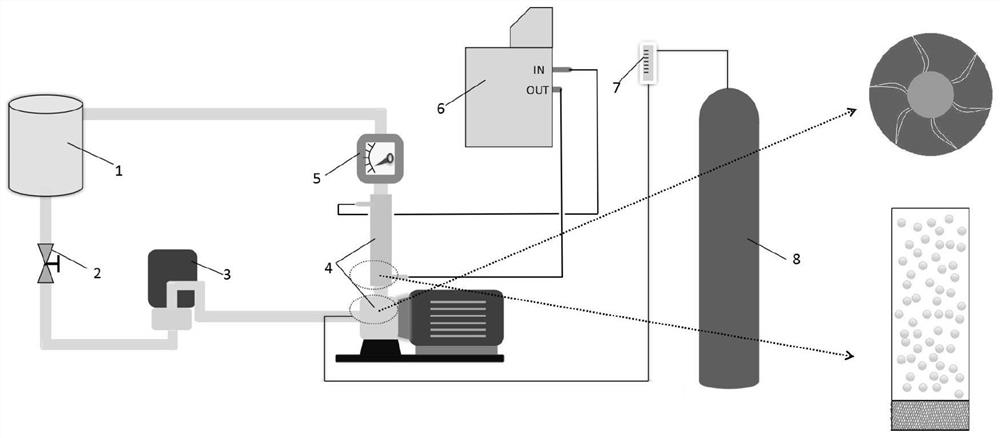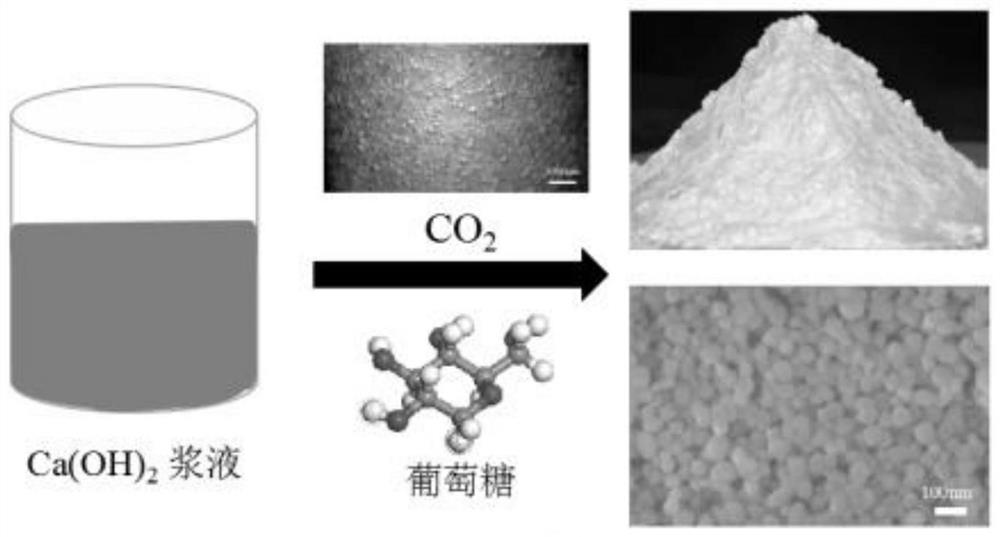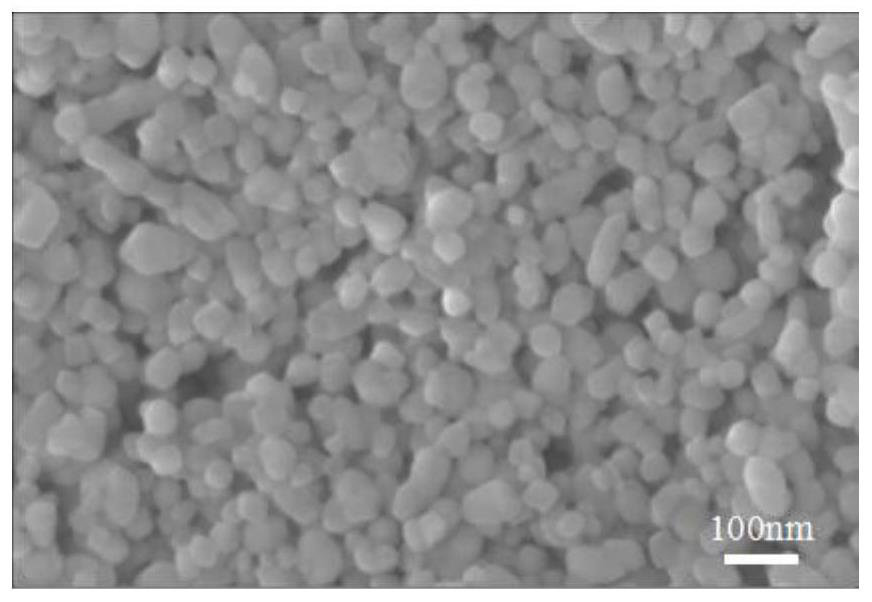Method for preparing cubic nano calcium carbonate by supergravity-micro-interface mass transfer enhanced carbonization method
A nano-calcium carbonate and super-gravity technology, applied in the direction of calcium carbonate/strontium/barium, nanotechnology, etc., can solve the problems of shortening the production cycle, achieve the effects of shortening the production cycle, low cost, and improving gas holdup
- Summary
- Abstract
- Description
- Claims
- Application Information
AI Technical Summary
Problems solved by technology
Method used
Image
Examples
Embodiment 1
[0033] Such as figure 1 , 2 Shown, a kind of hypergravity-micro-interface mass transfer enhanced carbonization method prepares the method for cubic nano-calcium carbonate, comprises the following steps:
[0034] S1. Take highly active calcium oxide, the weight ratio of water to calcium oxide is 5:1, stir and digest at 80°C for 2 hours, and digest the Ca(OH) 2 The slurry passes through a 200-mesh sieve to remove large particles of impurities to obtain refined Ca(OH) 2 Slurry, resulting refined Ca(OH) 2 The slurry is aged at room temperature for more than 12h, and the aged Ca(OH) 2 The slurry is adjusted to 4% (mass percentage);
[0035] S2. Before the carbonization reaction, a certain amount of glucose (2% of the theoretically generated calcium carbonate mass) is added to the Ca(OH) 2 In the slurry, stir to make it evenly mixed; the refined Ca(OH) 2 Put the slurry into the supergravity-micro-interface reactor, adjust to the initial carbonization reaction temperature of 20...
Embodiment 2
[0039] Such as figure 1 , 2 Shown, a kind of hypergravity-micro-interface mass transfer enhanced carbonization method prepares the method for cubic nano-calcium carbonate, comprises the following steps:
[0040] S1. Take highly active calcium oxide, the weight ratio of water to calcium oxide is 5:1, stir and digest at 80°C for 2 hours, and digest the Ca(OH) 2 The slurry passes through a 200-mesh sieve to remove large particles of impurities to obtain refined Ca(OH) 2 Slurry, resulting refined Ca(OH) 2 The slurry is aged at room temperature for more than 12h, and the aged Ca(OH) 2 The slurry is adjusted to 4% (mass percentage);
[0041]S2. Before the carbonization reaction, the refined Ca(OH) 2 Put the slurry into the supergravity-micro-interface reactor, adjust to the initial carbonization reaction temperature of 20°C, and pass in CO 2 , when the pH of the slurry drops to 7, the carbonization reaction ends, and the slurry is prepared;
[0042] S3. After the slurry obtai...
Embodiment 3
[0045] Such as figure 1 , 2 Shown, a kind of hypergravity-micro-interface mass transfer enhanced carbonization method prepares the method for cubic nano-calcium carbonate, comprises the following steps:
[0046] S1. Take highly active calcium oxide, the weight ratio of water to calcium oxide is 5:1, stir and digest at 80°C for 2 hours, and digest the Ca(OH) 2 The slurry passes through a 200-mesh sieve to remove large particles of impurities to obtain refined Ca(OH) 2 Slurry, resulting refined Ca(OH) 2 The slurry is aged at room temperature for more than 12h, and the aged Ca(OH) 2 The slurry is adjusted to 4% (mass percentage);
[0047] S2. Before the carbonization reaction, a certain amount of glucose (2% of the theoretically generated calcium carbonate mass) is added to the Ca(OH) 2 In the slurry, stir to make it evenly mixed; the refined Ca(OH) 2 Put the slurry into the supergravity-micro-interface reactor, adjust to the carbonization initial reaction temperature of 0°...
PUM
| Property | Measurement | Unit |
|---|---|---|
| Particle size | aaaaa | aaaaa |
Abstract
Description
Claims
Application Information
 Login to View More
Login to View More - R&D
- Intellectual Property
- Life Sciences
- Materials
- Tech Scout
- Unparalleled Data Quality
- Higher Quality Content
- 60% Fewer Hallucinations
Browse by: Latest US Patents, China's latest patents, Technical Efficacy Thesaurus, Application Domain, Technology Topic, Popular Technical Reports.
© 2025 PatSnap. All rights reserved.Legal|Privacy policy|Modern Slavery Act Transparency Statement|Sitemap|About US| Contact US: help@patsnap.com



